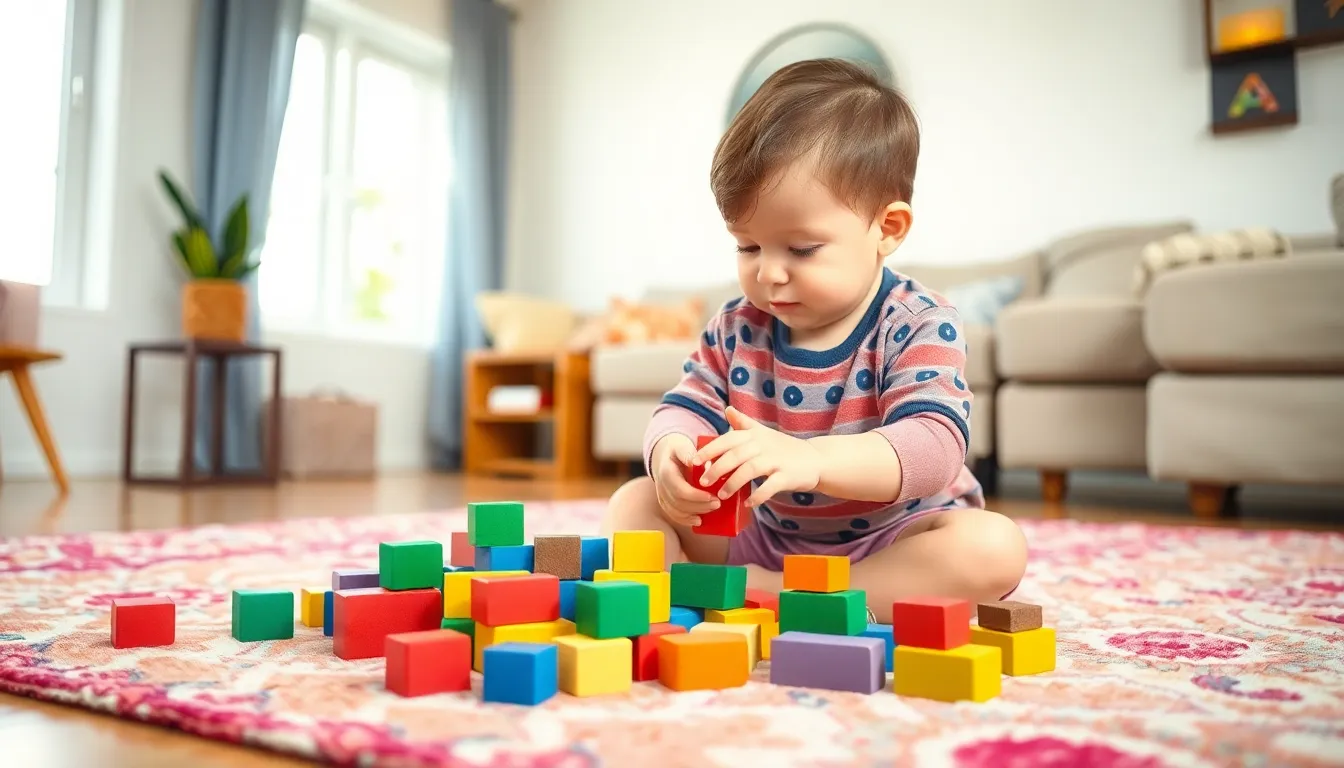Ever wondered when your brain finally decides to stop playing hide and seek with maturity? It’s a question that tickles the curiosity of scientists and everyday folks alike. While most people might think they’ve got it all figured out by their twenties, the truth is a bit more complex—and amusing.
Table of Contents
ToggleUnderstanding Brain Development
Brain development is a complex process that unfolds over many years. It begins in utero and continues into early adulthood. The prefrontal cortex, responsible for decision-making and impulse control, matures last. Research indicates that this area doesn’t fully develop until the mid-20s.
Neuroplasticity plays a crucial role throughout this journey. This ability allows the brain to adapt to experiences and learn from them at any age. Factors like environment, education, and social interactions significantly influence development. For instance, enriched environments promote cognitive growth.
Key milestones mark different stages of brain development. Birth to two years involves rapid growth, laying the foundation for future learning. From ages two to six, language skills and social connections flourish. School-age children see advancements in logical thinking and problem-solving.
Adolescence introduces unique challenges. Emotional regulation becomes more critical, and peer influence grows stronger. Research shows that significant changes occur during this stage as the brain strengthens neural connections and prunes unused pathways.
Brain development is not linear and doesn’t follow a strict timeline. Ongoing research continues to provide insights into this fascinating field, emphasizing the importance of nurturing environments and meaningful learning experiences.
Key Stages of Brain Development

Brain development occurs in distinct stages that significantly impact a person’s abilities. Understanding these stages helps clarify how the brain matures over time.
Early Childhood Development
Early childhood marks a crucial period for brain growth. From birth to age two, the brain experiences explosive growth, forming approximately 700 new neural connections every second. During this time, language skills and social interactions flourish. By ages two to six, children’s brains become adept at processing information, leading to impressive advancements in communication and emotional understanding. Experiences during these years shape subsequent development, making nurturing environments essential for optimal learning.
Adolescence and Brain Maturation
Adolescence introduces complex changes that refine brain functions. Brain maturation continues into the mid-20s, focusing on the prefrontal cortex, the area tied to decision-making and impulse control. Between ages 12 and 24, the brain undergoes significant reorganization, enhancing cognitive abilities and emotional regulation. Peer influence becomes more pronounced, shaping choices and behaviors. By this stage, the brain strengthens essential neural pathways while pruning less useful connections, resulting in improved mental processing and emotional depth.
Factors Influencing Brain Development
Several factors shape brain development, primarily genetics and environment. Both elements intricately influence growth, molding cognitive and emotional capabilities throughout life.
Genetics and Heredity
Genetics plays a crucial role in brain development. Inherited traits, such as intelligence, personality, and emotional responses, stem from genetic factors. Specific genes affect neural growth and synaptic connections. Research indicates that approximately 40% to 80% of cognitive abilities are inherited, showing the strong impact of heredity on brain functioning. Genetic variations can also dictate susceptibility to mental health disorders, affecting overall brain maturity and functionality.
Environmental Influences
Environment significantly affects brain development. Enriching surroundings foster strong neural connections, enhancing learning and cognitive skills. Access to quality education and nurturing relationships facilitates optimal growth during critical developmental stages. Research highlights that adverse experiences, like trauma or neglect, can hinder brain maturation, leading to potential long-term effects on behavior and cognition. Moreover, social interactions and cultural exposure serve as vital catalysts for emotional and cognitive development, shaping individual experiences and brain pathways.
The Age of Full Brain Development
Brain development continues into the mid-20s, with the prefrontal cortex experiencing significant maturation during this time. Factors such as genetics and environment heavily influence this process, which varies for each individual.
Neuroplasticity and Lifelong Learning
Neuroplasticity allows the brain to reorganize itself throughout life, adapting to new experiences and learning. Research indicates that individuals can form new neural connections even in late adulthood. Experiences such as skill acquisition, social interactions, and education stimulate this plasticity. Engaging in challenging tasks, learning new languages, or practicing musical instruments enhances cognitive functions. Environments that foster creativity and exploration promote this ongoing brain adaptability. Strong connections established during early life can amplify lifelong learning and cognitive resilience. This flexibility emphasizes the role of continuous learning and adaptation in brain health.
Implications of Brain Development
Brain development significantly impacts various aspects of life. These implications shape mental health and decision-making.
Mental Health and Wellbeing
Mental health hinges on brain development, particularly during critical growth periods. Early childhood experiences influence emotional regulation and social skills. A nurturing environment promotes resilience and adaptive coping strategies. Conversely, adverse experiences can increase vulnerability to mental health disorders. Adolescents face heightened emotional fluctuations, partly due to ongoing brain maturation. Long-term effects on mood and behavior can stem from earlier trauma or neglect. Understanding these connections underscores the importance of supportive relationships and positive environments for healthy development.
Decision-Making and Risk Assessment
Decision-making processes evolve with brain maturity, particularly in the prefrontal cortex. This area of the brain matures last, resulting in challenges during adolescence. Young adults often exhibit impulsive behaviors, as judgment and risk assessment may not be fully developed. Cognitive abilities enhance over time, which improves decision quality. Age plays a critical role; individuals in their mid-20s generally have better impulse control. Environmental influences further shape decision-making capabilities. Learning experiences can strengthen neural connections associated with critical thinking and risk evaluation.
The journey of brain development is a fascinating and intricate process that extends well into the mid-20s. Recognizing that maturity isn’t solely defined by age but by a combination of genetic and environmental factors is essential. The prefrontal cortex plays a pivotal role in decision-making and impulse control, maturing last and influencing behaviors during adolescence.
Nurturing environments and meaningful experiences are crucial for fostering optimal brain health. As individuals navigate through life, they continue to adapt and learn, demonstrating that the brain’s capacity for growth never truly ends. Understanding these dynamics can lead to better support for mental health and cognitive development throughout all stages of life.



